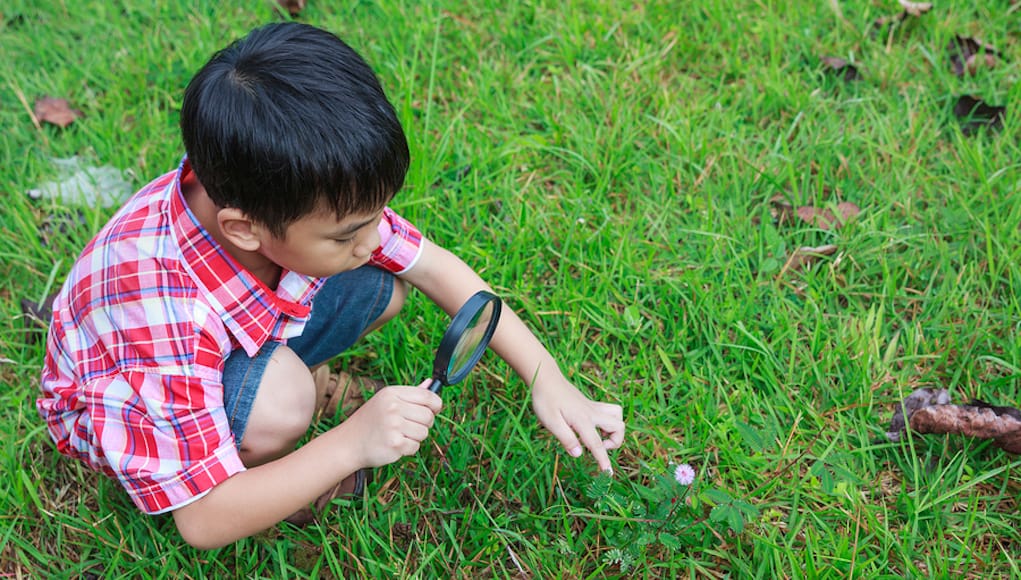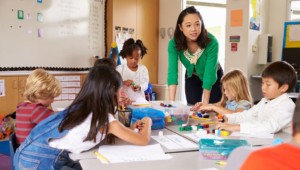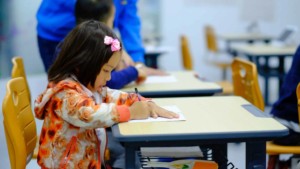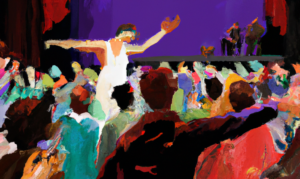Every Place is Special or No Place is Special

By Anna Luhrmann
My student stopped short and dropped to the ground, examining a track in the snow. “It’s a wolf!” he screamed with terror and excitement.
My group of seven middle school students ran over to examine the track for themselves. They begged me to confirm that it was in fact a wolf, comparing their hand size to the size of the track and relishing the thought that they may be standing exactly where a wolf had been not too long ago.
I said, “You know what to do,” and they immediately dropped their packs and pulled out their scat and track books, furiously flipping through the pages. I had taught them previously how to assess a track, looking for details in the pad shape and measuring the size, the negative space, the claws and the way the tracks fit together to form a stride. I watched them debate and argue over whether or not the track was indeed a wolf, or possibly a coyote, or maybe even a dog. I never told them the answer but kept asking questions: Would a wolf really be here? Why do you think a wolf would be walking in this direction?

We followed the track until we had gone too far. It did not matter if the track was a wolf, a coyote or a dog. The students were engaged in the experience. They were learning without even realizing it. They worked together–exploring the evidence in the snow and looking at the landscape as it told them a story. They were detectives, working to crack the mystery that the forest laid before us.
This experience occurred during my first year of engagement with place-based education. I was a graduate student in a residential program in Grand Teton National Park, a place filled with howls and hoots and stars that looked like glitter. I never had to convince our visiting students that Grand Teton National Park is an amazing place. It speaks for itself.

But how do you teach place-based education in a place that may not speak for itself? The reality of teaching place-based education hit me when I left Grand Teton National Park and moved to Laramie, Wyo., to finish my master’s degree. Laramie is in the southeast corner of the state, about a 6-hour drive from the Tetons. Sagebrush flats surround this western town where the history of the railroad tells the story of this place. During my exciting move to Grand Teton National Park, when I drove through Laramie on I-80, zooming past the billboards, the trailer parks and the cattle, I paid no attention to the town. I was about to live in a national park, going to sleep to the yipping of coyotes and waking up to bison in my backyard. I felt that I had bigger and better places ahead of me, and didn’t pay much attention to this cowboy town.
A year later, I begrudgingly packed my car and left Grand Teton National Park to move to Laramie. I convinced myself that I only had to live there for 1 year and finish my degree, then I could move someplace much more exhilarating. During my residential year in the Tetons, I had taken a place-based education class where I learned that “no place is special, or every place is special.” I thought, “Sure, easy to say when you live in a national park.” Living in Laramie, I learned more about place-based education than I ever could have in the Tetons.
Every place really is special, and I have learned this by experiencing a place like Laramie–a railroad, cowboy, university town that is a melting pot of ranchers, academics and outdoor junkies. Laramie is a really special community, one that feels more real than the fairy tale of Jackson Hole. Laramie has taught me the potential of place-based education in every place.

Place-based education teaches students and teachers alike that the more you look, the more you see, and that the more experiences you have, the more you connect. I worked with a few peers on a community project for my place-based learning class this past semester. We engaged in this project not only to immerse ourselves in this new setting, but also to gain experience organizing a place-based project in the community. I was apprehensive at first, having only just moved to Laramie and honestly not being that excited about it. How can I teach students to be excited about a place when I’m not excited to live here? I discovered the answer while learning alongside our students.
We collaborated with local agencies to a create a community project that the students drove. When we approached these agencies, they asked us what we wanted to do, and we said, “Well… it’s up to the kids.” We helped the kids organize and create a field day in the park where we assessed stream health, cleaned up the park, geo-cached and created art, because that is what they wanted to do and what they felt needed addressing.

The community project turned into a day of running around the park, collecting branches to build forts, identifying macroinvertebrates and planting geocaches. We did not do some epic trip into the mountains or pay money to see a fine art exhibit. This event cost us no money, and it brought together students from two different agencies, lots of bugs and cool forts. The students truly enjoyed their place. They enjoyed learning together in a setting that was impacted by their engagement, passion and interests. The students were excited to go back to the park and continue building their forts. They were thrilled to show the “macros” they collected to their peers and could not wait to continue to explore geocaching in Laramie. You do not need big mountains or wolf tracks to engage students in the community or get them excited about experiencing their place. You just need to get out and explore.
Some key lessons from my experiences are that place-based education:
- Is based on connections to students’ lives.
- Does not have to cost money.
- Can be done anywhere: a local park, a parking lot, a schoolyard or a museum.
- Fosters connections between people and place.
- Empowers students.
- Is special everywhere.
- Creates learning opportunities for teachers who are learning alongside their students.
- Engages students in their interests and takes advantage of teachable moments, whether the focus is a wolf or dog track.
This blog is part of our “Place-Based Education” blog series. To learn more and contribute a guest post for the series, check out the PBE campaign page. Join in the conversation on social media using #PlaceBasedEd. For more on Place-Based Education, see:
- Getting Smart Podcast | Experiencing Place-Based Education at Teton Science Schools
- 5 Levels of Place-Based Learning Implementation
- The Past, Present and Future of Place-Based Learning
- Place-Based Education: Communities as Learning Environments
- PhotoBlog | Teton Science Schools & The Power of Place-Based Learning
Anna Luhrmann is a graduate student in natural science education who participated in graduate studies at Teton Science Schools. You can find Teton Science Schools on Twitter at @tetonscience.





0 Comments
Leave a Comment
Your email address will not be published. All fields are required.